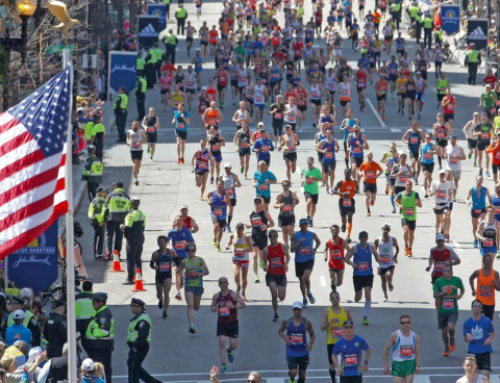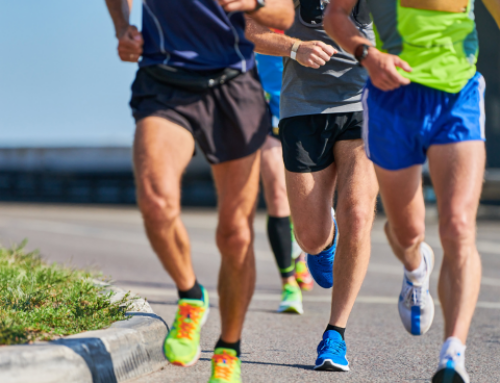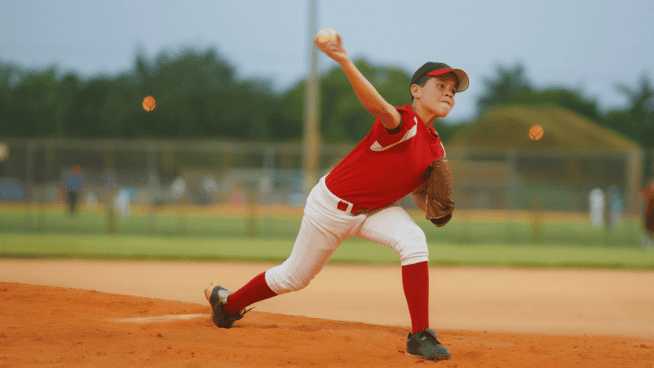Speed Training with the Florida Marlins
The Florida Marlins were supposed to lose 100 games in 2006. Someone must have forgotten to tell them. The team surprised many by going out and posting a respectable record, just under .500. Besides being pumped about the Marlins’ overall team effort, South Florida fans received a promise of future success from their gifted young shortstop, Hanley Ramirez.
Simply put, the 6’3”, 195-pound NL Rookie of the Year is a tremendous athlete. “Like many middle infielders, Hanley is one of the great athletes in this game,” says Marlins strength and conditioning coach Paul Fournier. “He’s so blessed with pure natural ability. Guys like him can get stronger just sitting on the couch.”
Although his shortstop possesses boundless athleticism, Fournier would be remiss if he allowed Hanley to simply accept and rely on his God-given ability. “We look beyond natural talent and speed, because we have ways to improve on them,” Fournier says. “The main thing we do with our young players is educate them on speed issues and maintenance doses throughout the season. Whether it’s lifting or sprint work, if we don’t continue them with our everyday players, fatigue will set in; it’s a long season, and we do our best to delay its onset.”
To allow Hanley to reach his full potential as a baseball player, Fournier has developed a specific speed-focused training approach. “As far as Hanley’s speed development goes, we focus on the first 10 yards of his running,” he says. “The game of baseball is all about getting out of the box and having great first-step quickness, because it is so hard to make up time toward the end of a run. It is a game of inches, so if you can take a tenth of a second off the first 10 yards of a run, it will make a huge difference at the end of it—whether you are going from home to first, first to second or first to third.”
According to Fournier, the impact of improved acceleration on a player’s game is dramatic. “Consider how many bang-bang plays occur in this game,” he says. “If you learn to get out of the box quickly and crossover appropriately, then you will make improvements in your batting average, stolen base percentage and runs scored.”
Knowing an athlete can run only as fast as his form allows, Fournier and the Marlins’ training staff perform preseason evaluations to determine if the players are inhibited by hip or shoulder tightness. “We look at the rotational ability of the hips and any kind of inhibition in the shoulder region, from injury or other problems.” Fournier says. “When a guy is inhibited, he won’t get proper stride length or run with proper form.”
To combat tightness and reinforce proper running form—and in turn to improve speed within the first 10 yards—Fournier uses various cone drills and overspeed training before and during the season. Hanley’s impressive rookie season numbers highlight the drills’ effectiveness. In addition to a .292 batting average, Hanley was the first Marlin ever to post double digits in triples (11), home runs (17) and stolen bases (51), as well as the first-ever NL rookie to score 110-plus runs (119) and record 50-plus stolen bases.
Fournier’s speed and maintenance work contributed to the astounding fact that out of 12 NL rookies who received votes for Rookie of the Year, six were Marlins. Further, his in-season maintenance doses kept the Marlins in the Wild Card chase until mid-September, making them the most surprising team of ’06.
Use the following five exercises before and during your season to optimize your ability and surprise anyone who doesn’t expect much from you and your game this season.
Warm-Up
Jump Rope Routine
• Regular jumps for 15 seconds, rest for 15 seconds
• Alternate foot jumps for 15 seconds, rest for 15 seconds
• Regular jumps for 30 seconds, rest for 30 seconds
• Alternate foot jumps for 30 seconds, rest for 30 seconds
• Regular jumps for 45 seconds, rest for 45 seconds
• Alternate foot jumps for 45 seconds, rest for 45 seconds
• Regular jumps for 60 seconds, rest for 60 seconds
• Alternate foot jumps for 60 seconds, rest for 60 seconds
• Work back down to 15 seconds through same progression.
Benefits: Footwork, hand-eye coordination, forearm strength and endurance
Fournier: This warms us up while simultaneously working on other aspects of athleticism. It’s also great anaerobic training. The hitters love it, because it burns out their forearms
Sprint Work
Resisted Overspeed Runs
• Attach elastic band or tubing around waist and have partner apply steady resistance behind you
• Sprint 10 to 15 yards against resistance, then sprint 10 more yards after partner releases resistance
Reps/Rest: 2/ 90 seconds
Benefits: Acceleration, proper running form
Fournier: If you don’t accelerate to keep up when the resistance is released, you will fall flat on your face. We make sure footwork is correct, and that they have a good body lean when they begin accelerating.
Cone Drills
Place cones 5-10 yards apart for each drill
Four-Corner Drill
• Begin at start cone and sprint to top right cone
• Shuffle to top left cone
• Backpedal to back left cone
• Shuffle through start cone
• Begin next repetition on opposite side
Variation: Perform carioca instead of shuffling
Reps/Rest: 2/ 90 seconds
Five-Cone Drill
• Begin at start cone and backpedal to back left cone
• Plant and sprint at 45-degree angle to middle cone
• Backpedal at 45-degree angle to back right cone
• Plant and sprint through top right cone
• Begin next repetition on opposite side
Reps/Rest: 2/ 90 seconds
T-Drill
• Begin at start cone and backpedal to middle of T
• Shuffle to right cone, then shuffle back across T to far-left cone
• Sprint back to middle cone
• Round middle cone and sprint through start cone
• Perform next rep in opposite direction
Variation: Perform carioca instead of shuffling
Reps/Rest: 2/ 90 seconds
Benefits of cone drills: Change of direction, hip range of motion, first-step quickness, improved base-running
Fournier: On these cone drills, I look for eye focus, good body lean and elbows tight to the sides and bent 90 degrees. I want good knee punch and cheek-to-cheek arm action [hands go from face cheek to butt cheek]. I tell my players to watch a really fast football player when he breaks away. It is amazing how little his head moves, and that’s what I want. I coach them to keep their heads down for three strides when sprinting or stealing a base. Then they can begin lifting their heads until their eyes are straight ahead with minimal movement.
These drills also teach guys to open and close their hips when necessary. When a guy’s stride is inhibited by hip tightness, the drills can help him increase his range of motion there.
RECOMMENDED FOR YOU
Speed Training with the Florida Marlins
The Florida Marlins were supposed to lose 100 games in 2006. Someone must have forgotten to tell them. The team surprised many by going out and posting a respectable record, just under .500. Besides being pumped about the Marlins’ overall team effort, South Florida fans received a promise of future success from their gifted young shortstop, Hanley Ramirez.
Simply put, the 6’3”, 195-pound NL Rookie of the Year is a tremendous athlete. “Like many middle infielders, Hanley is one of the great athletes in this game,” says Marlins strength and conditioning coach Paul Fournier. “He’s so blessed with pure natural ability. Guys like him can get stronger just sitting on the couch.”
Although his shortstop possesses boundless athleticism, Fournier would be remiss if he allowed Hanley to simply accept and rely on his God-given ability. “We look beyond natural talent and speed, because we have ways to improve on them,” Fournier says. “The main thing we do with our young players is educate them on speed issues and maintenance doses throughout the season. Whether it’s lifting or sprint work, if we don’t continue them with our everyday players, fatigue will set in; it’s a long season, and we do our best to delay its onset.”
To allow Hanley to reach his full potential as a baseball player, Fournier has developed a specific speed-focused training approach. “As far as Hanley’s speed development goes, we focus on the first 10 yards of his running,” he says. “The game of baseball is all about getting out of the box and having great first-step quickness, because it is so hard to make up time toward the end of a run. It is a game of inches, so if you can take a tenth of a second off the first 10 yards of a run, it will make a huge difference at the end of it—whether you are going from home to first, first to second or first to third.”
According to Fournier, the impact of improved acceleration on a player’s game is dramatic. “Consider how many bang-bang plays occur in this game,” he says. “If you learn to get out of the box quickly and crossover appropriately, then you will make improvements in your batting average, stolen base percentage and runs scored.”
Knowing an athlete can run only as fast as his form allows, Fournier and the Marlins’ training staff perform preseason evaluations to determine if the players are inhibited by hip or shoulder tightness. “We look at the rotational ability of the hips and any kind of inhibition in the shoulder region, from injury or other problems.” Fournier says. “When a guy is inhibited, he won’t get proper stride length or run with proper form.”
To combat tightness and reinforce proper running form—and in turn to improve speed within the first 10 yards—Fournier uses various cone drills and overspeed training before and during the season. Hanley’s impressive rookie season numbers highlight the drills’ effectiveness. In addition to a .292 batting average, Hanley was the first Marlin ever to post double digits in triples (11), home runs (17) and stolen bases (51), as well as the first-ever NL rookie to score 110-plus runs (119) and record 50-plus stolen bases.
Fournier’s speed and maintenance work contributed to the astounding fact that out of 12 NL rookies who received votes for Rookie of the Year, six were Marlins. Further, his in-season maintenance doses kept the Marlins in the Wild Card chase until mid-September, making them the most surprising team of ’06.
Use the following five exercises before and during your season to optimize your ability and surprise anyone who doesn’t expect much from you and your game this season.
Warm-Up
Jump Rope Routine
• Regular jumps for 15 seconds, rest for 15 seconds
• Alternate foot jumps for 15 seconds, rest for 15 seconds
• Regular jumps for 30 seconds, rest for 30 seconds
• Alternate foot jumps for 30 seconds, rest for 30 seconds
• Regular jumps for 45 seconds, rest for 45 seconds
• Alternate foot jumps for 45 seconds, rest for 45 seconds
• Regular jumps for 60 seconds, rest for 60 seconds
• Alternate foot jumps for 60 seconds, rest for 60 seconds
• Work back down to 15 seconds through same progression.
Benefits: Footwork, hand-eye coordination, forearm strength and endurance
Fournier: This warms us up while simultaneously working on other aspects of athleticism. It’s also great anaerobic training. The hitters love it, because it burns out their forearms
Sprint Work
Resisted Overspeed Runs
• Attach elastic band or tubing around waist and have partner apply steady resistance behind you
• Sprint 10 to 15 yards against resistance, then sprint 10 more yards after partner releases resistance
Reps/Rest: 2/ 90 seconds
Benefits: Acceleration, proper running form
Fournier: If you don’t accelerate to keep up when the resistance is released, you will fall flat on your face. We make sure footwork is correct, and that they have a good body lean when they begin accelerating.
Cone Drills
Place cones 5-10 yards apart for each drill
Four-Corner Drill
• Begin at start cone and sprint to top right cone
• Shuffle to top left cone
• Backpedal to back left cone
• Shuffle through start cone
• Begin next repetition on opposite side
Variation: Perform carioca instead of shuffling
Reps/Rest: 2/ 90 seconds
Five-Cone Drill
• Begin at start cone and backpedal to back left cone
• Plant and sprint at 45-degree angle to middle cone
• Backpedal at 45-degree angle to back right cone
• Plant and sprint through top right cone
• Begin next repetition on opposite side
Reps/Rest: 2/ 90 seconds
T-Drill
• Begin at start cone and backpedal to middle of T
• Shuffle to right cone, then shuffle back across T to far-left cone
• Sprint back to middle cone
• Round middle cone and sprint through start cone
• Perform next rep in opposite direction
Variation: Perform carioca instead of shuffling
Reps/Rest: 2/ 90 seconds
Benefits of cone drills: Change of direction, hip range of motion, first-step quickness, improved base-running
Fournier: On these cone drills, I look for eye focus, good body lean and elbows tight to the sides and bent 90 degrees. I want good knee punch and cheek-to-cheek arm action [hands go from face cheek to butt cheek]. I tell my players to watch a really fast football player when he breaks away. It is amazing how little his head moves, and that’s what I want. I coach them to keep their heads down for three strides when sprinting or stealing a base. Then they can begin lifting their heads until their eyes are straight ahead with minimal movement.
These drills also teach guys to open and close their hips when necessary. When a guy’s stride is inhibited by hip tightness, the drills can help him increase his range of motion there.










